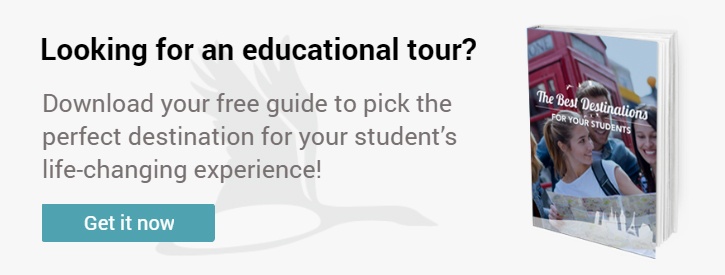As language teachers, there’s always the push to use more authentic materials in our classrooms.
However, tasked with 500 million things to do in a day, when do we have the time to find such resources?
The answer is simple: summer vacation travel!
Summer trips are the perfect opportunity to stock up on quality authentic resources for the upcoming school year. In-between sightseeing and sipping some well-deserved cocktails, grab some of the authentic materials recommended below to make lesson planning in the fall a breeze!
What is an Authentic Resource?
To put it simply, an authentic resource is something written by a native speaker for a native speaker. In other words, they are documents, media or realia with an authentic purpose, not one created specifically for a classroom.
Authentic materials provide students with the opportunity to see the target language in a real context (and not just in a textbook). Using authentic materials allows students to connect with the target culture and understand how their language learning is relevant in the real world. What’s more, these resources are often fun and engaging and will increase student interest and participation.
6 Authentic Language Resources to Collect While Travelling
Menus
Just to clarify, here we are not advocating that you run off with a stash of vinyl menus tucked under your shirt! However, many restaurants use paper menus (sometimes serving the dual purpose of a placemat) and can easily be folded and later photocopied for classroom use. No paper menu? Take a picture of the menu or go online to the restaurant’s website to print out a copy. Students will enjoy seeing what types of food are offered in different places and can compare how much restaurants cost abroad. Great for role play activities to teach client/waiter dialogues.
Newspapers
Many cities across the globe offer free, daily newspapers, often handed out near train/metro stations. For example, here in Montréal the free French newspapers Journal Métro and 24heures Montréal can be found stacked in bins in every metro station. My favorite newspaper activity for a beginner class? Cognate word hunt competition-have students browse the newspapers to see how many cognates they can find. Give students a certain amount of time to browse/make their list, naming a winner at the end for whoever finds the most. Use student lists to generate a classroom cognate word wall.
Grocery Store Flyers
Sometimes included in local newspapers, many grocery stores issue a free, weekly flyer displaying their sales. These are great colorful resources to teach food vocabulary, as well as to spark cultural conversations. I remember my French students were shocked to discover that horse meat was for sale in Québec-this led to a great discussion on food taboos around the world and appreciating culinary differences. Find flyers when passing by local supermarkets.
Tourist Brochures
Travel brochures are great target language resources as they are brief, informative, cultural texts usually full of pictures which can serve as context clues. Find them for free at tourist sites, hotel lobbies or tourist offices. The student activities using travel brochures are limited only by your imagination!
Maps
While abroad grab some of the free, local maps (often available at train/bus stations, tourist offices, and hotels). Maps could be of the region, the city or even of the public transportation. These are great for cultural/geography lessons as well as teaching how to give directions in the target language. I remember once using the (gigantic) Paris metro map to deliver a combined lesson on major landmarks in Paris as well as giving directions in French. The students loved it!
Photos
If nothing else, your own travel photos are always free and easy to customize for your class. Take pictures of famous monuments for your lesson plans or try to capture authentic scenes which could spark cultural conversations. Another idea: put together a brief slideshow of your summer travel photos to show students on the first day of class. This is a great way to introduce yourself to your new students and build interest in travel and the target language!
Bon voyage and happy collecting!


